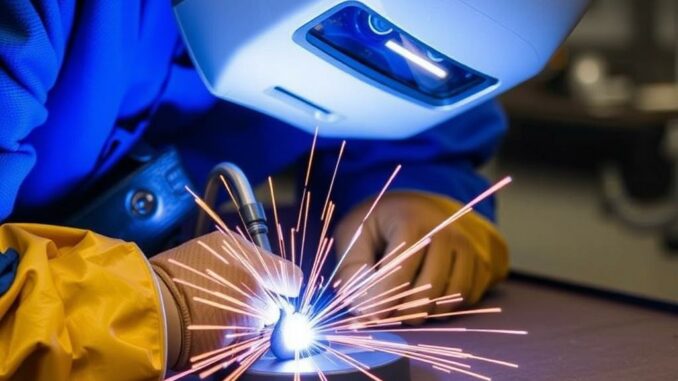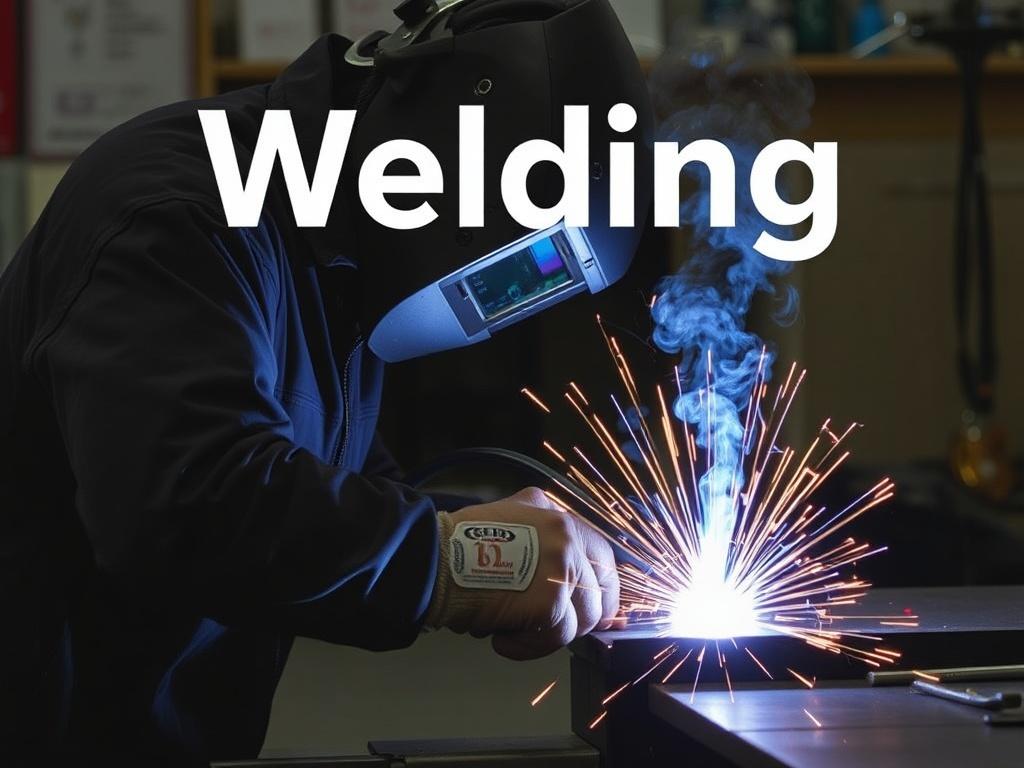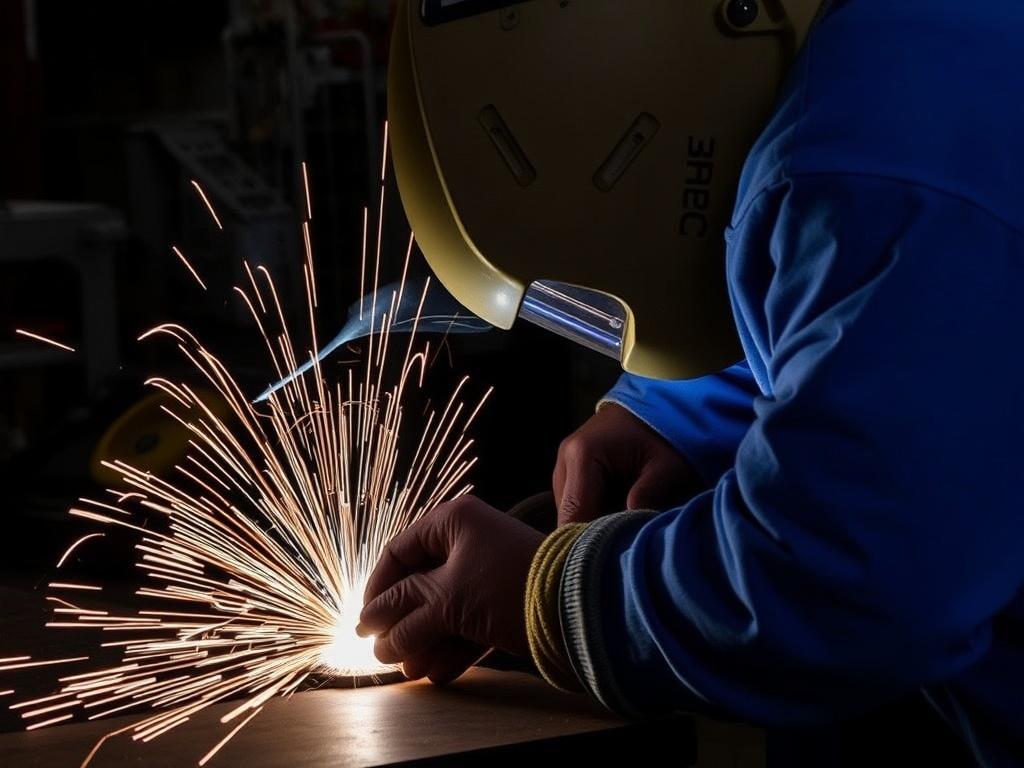
Welding is a fundamental skill in manufacturing, construction, and repair industries. Whether you’re fabricating large structures or making small repairs, understanding different types of welding processes can greatly impact the quality, durability, and cost of your work. In this article, we’ll dive deep into the world of welding, exploring everything from basic concepts to advanced techniques. We’ll also take a closer look at the pros and cons of each method, the tools involved, and real-world applications so you can choose the right type of welding for your needs.
What Is Welding? An Introduction to the Art and Science

At its core, welding is the process of joining two pieces of metal or thermoplastics by applying heat, pressure, or both. This results in a strong, permanent bond that can withstand various stresses. Unlike simple fastening or gluing, welding fuses the materials together, often creating a joint as strong as—or even stronger than—the base metals themselves.
The origins of welding date back thousands of years, evolving alongside human innovation and industrial progress. Today, welding encompasses a diverse set of processes, each tailored to specific materials, thicknesses, and environmental conditions.
Before we jump into the individual types, it’s important to understand some common terms that will come up repeatedly:
- Filler Material: The additional metal added to the joint during welding.
- Shielding Gas: A gas used to protect the molten weld pool from atmospheric contamination.
- Heat-Affected Zone (HAZ): The area of base material that has had its microstructure and properties altered due to the welding heat.
- Weld Pool: The molten metal formed during the welding process.
Main Types of Welding Processes
Now that we’ve covered the basics let’s get into the meat of the article. Each welding method is distinct, requiring different equipment, skill levels, and providing varied results. Here’s a comprehensive overview of the most popular types of welding processes explained.
1. Shielded Metal Arc Welding (SMAW)
Also known as stick welding, Shielded Metal Arc Welding (SMAW) is one of the oldest and most widely used welding techniques. Its popularity arises from its simplicity, portability, and versatility, making it a favorite for repair work and construction on-site.
In SMAW, an electric current passes through a consumable electrode coated with flux. When the electrode melts, it deposits filler metal into the weld joint. Meanwhile, the flux coating produces a gas shield along with slag that protects the molten weld pool from contamination.
| Advantages | Disadvantages |
|---|---|
| Simple equipment and setup | Slower than some other methods |
| Highly portable – no external shielding gas | Requires skill to maintain stable arc and avoid defects |
| Works well outdoors and in windy conditions | Produces slag that must be chipped away after welding |
| Effective on rusty or dirty metals | Limited suitable electrode types for certain metals |
This process is excellent for welding iron, steel, and various alloys, especially in heavy structural steel and pipeline work. While it may not be the fastest option, its reliability and relatively low cost keep it relevant today.
2. Gas Metal Arc Welding (GMAW or MIG)
Gas Metal Arc Welding, commonly known as MIG (Metal Inert Gas) welding, is a process valued for its speed and ease of use. MIG welding uses a continuous solid wire electrode fed through a welding gun along with a shielding gas to protect the weld pool.
This process is especially popular in automotive and manufacturing industries due to its clean welds and fast operation.
- The shielding gas is often argon, carbon dioxide, or a mixture of the two.
- The continuous wire feed allows for longer welds without interruption.
- MIG welding requires less operator skill compared to stick welding.
Let’s look at the practical benefits and limitations in the table below:
| Advantages | Disadvantages |
|---|---|
| Faster welding speeds – ideal for production | Requires gas supply, less portable |
| Cleaner welds with little slag | Shielding gas can be affected by wind outdoors |
| Less operator fatigue due to semi-automatic process | Less effective on dirty or rusty surfaces |
| Good for thin to medium materials | Equipment can be more expensive than SMAW |
MIG welding is a great choice for beginners and professionals alike, especially when working with stainless steel, aluminum, and mild steel.
3. Gas Tungsten Arc Welding (GTAW or TIG)
Gas Tungsten Arc Welding, known as TIG (Tungsten Inert Gas) welding, is recognized as the most precise and high-quality arc welding method available. In TIG, a non-consumable tungsten electrode generates the arc, and an inert gas (usually argon or helium) shields the weld area. Filler metal is often added manually.
This technique excels when welding thin materials or metals requiring exceptional craftsmanship, such as aluminum, magnesium, and copper alloys.
Some key points about TIG welding include:
- Highly versatile with excellent control over the welding process.
- Produces an aesthetically clean, high-quality weld.
- Requires a skilled operator due to dual hand coordination.
- Lower deposition rates compared to MIG or stick welding.
| Advantages | Disadvantages |
|---|---|
| High precision and weld quality | Slower process, not ideal for thick metals |
| No slag, resulting in clean welds | Requires high operator skill and coordination |
| Suitable for all weldable metals | More expensive equipment and slower speed |
| Excellent for thin metal and critical joints | Less tolerant of dirty or rusty surfaces |
TIG welding is widely used in aerospace, automotive, and artistic welding projects where precision and appearance are paramount.
4. Flux-Cored Arc Welding (FCAW)
Flux-Cored Arc Welding (FCAW) can be seen as a hybrid between stick welding and MIG welding. It uses a continuously-fed tubular wire filled with flux instead of a solid wire and shielding gas. This flux produces its own shielding gas and slag, allowing welding without an external gas supply—although some FCAW processes do use gas to improve weld quality.
FCAW is favored in heavy fabrication and construction due to its efficiency in out-of-position welding and rust tolerance. The method also provides deeper penetration than MIG in some cases.
- Works well outdoors or in windy conditions where shielding gas would be blown away.
- Faster than stick welding in most circumstances.
- Good for thick materials and structural steel.
| Advantages | Disadvantages |
|---|---|
| High deposition rates and productivity | Slag removal required after welding |
| Works well outdoors without external shielding gas | Can produce more smoke and fumes |
| Suitable for thick materials and joints | More expensive wire compared to solid MIG wire |
| Easier to learn than stick welding for some operators | Less suitable for thin materials |
If you need an efficient, rugged welding method that balances portability and speed, FCAW might be the perfect fit.
5. Submerged Arc Welding (SAW)
Submerged Arc Welding (SAW) differs from the previous methods by using a continuously fed consumable electrode beneath a blanket of granular flux. This “submerged” nature prevents exposure to the atmosphere, virtually eliminating spatter and smoke.
This process is mostly used in heavy industry for thick, long welds such as pressure vessels, storage tanks, shipbuilding, and pipelines.
Typical characteristics of SAW include:
- High welding speeds and deep penetration.
- Automated or semi-automated process, suitable for large-scale production.
- Minimal fumes and high-quality welds.
- Requires flat or horizontal welding due to equipment constraints.
| Advantages | Disadvantages |
|---|---|
| Extremely high deposition rates | Limited to flat or horizontal positions |
| Deep penetration suitable for thick sections | Requires more complex equipment |
| High-quality, defect-free welds | Not practical for small or intricate welds |
| Minimized operator exposure to fumes | Limited portability |
Submerged Arc Welding stands out in manufacturing environments requiring speed and consistency but is not a go-to for on-site, small, or delicate welding jobs.
Other Noteworthy Welding Techniques

Beyond these popular processes, several specialized welding types deserve mention due to their unique advantages, especially in specific industries or for challenging materials.
6. Electron Beam Welding (EBW)
Electron Beam Welding uses a focused beam of high-velocity electrons in a vacuum chamber to melt and join metals. This method can produce extremely precise, narrow welds with minimal distortion.
Due to the necessity of a vacuum environment and high cost, EBW is primarily used in aerospace and nuclear industries. Its pinpoint accuracy makes it ideal for welding very thin sections or complex components.
7. Laser Beam Welding (LBW)
Laser Welding uses highly concentrated laser light to melt materials and form a joint. It shares many benefits with Electron Beam Welding — such as minimal distortion, deep penetration, and automation capabilities — but operates at atmospheric pressure.
Laser welding is increasingly popular in automotive manufacturing and electronics for clean, fast, and precise welds. The equipment cost and required precision, however, can be a barrier for small-scale operations.
8. Resistance Spot Welding (RSW)
Commonly used in sheet metal fabrication, resistance spot welding joins metals by applying pressure and passing an electric current through the joint. The resistance generates localized heat, causing the metals to fuse together.
This process is critical in automotive assembly lines for joining sheet metal parts quickly and efficiently. While limited to spot welds, resistance welding boasts speed and repeatability unmatched by other methods for certain applications.
Choosing the Right Welding Process: Factors to Consider
With so many welding processes available, how can you decide which one is right for your project? Several criteria should guide your choice.
Material Type and Thickness
Some welding types suit specific metals better. For example, TIG welding excels with aluminum and stainless steel, while stick welding handles thicker, dirtier steel surfaces effectively. The thickness of your materials can also dictate the method—thin metals often require the precision of TIG, whereas thicker plates may benefit from stick or FCAW.
Position and Environment
If you’re welding outdoors or in challenging weather, processes like SMAW or FCAW that don’t rely on external shielding gas offer advantages. Conversely, MIG and TIG are more suited to indoor or controlled environments. Welding position matters too—some techniques work only on flat surfaces, while others are better for vertical or overhead work.
Speed, Cost, and Productivity
Production settings prioritize speed and automation, making MIG, FCAW, SAW, and resistance spot welds optimal. Manual methods like TIG provide superior quality but with lower throughput. Your budget affects equipment purchase and operation costs, including consumables and training.
Skill Level Required
Stick welding and MIG are easier for beginners, while TIG demands a higher skill level. Automatic or robotic welding might require less manual expertise but more technical knowledge for setup and maintenance.
Summary Table: Welding Processes Overview

| Welding Process | Common Applications | Materials | Skill Level | Portability | Speed |
|---|---|---|---|---|---|
| Shielded Metal Arc Welding (SMAW) | Construction, pipelines, repairs | Steel, iron, alloys | Moderate | High | Medium |
| Gas Metal Arc Welding (MIG) | Automotive, manufacturing | Steel, aluminum, stainless steel | Easy | Low to Medium | Fast |
| Gas Tungsten Arc Welding (TIG) | Aerospace, artistic, thin metals | Aluminum, stainless steel, copper | High | Medium | Slow |
| Flux-Cored Arc Welding (FCAW) | Heavy fabrication, construction | Structural steel, alloy steel | Moderate | High | Fast |
| Submerged Arc Welding (SAW) | Shipbuilding, pressure vessels | Thick steel plates | Low to Moderate (automated) | Low | Very Fast |
Basic Welding Safety Tips You Should Never Ignore
No matter which welding process you choose, safety must always come first. Welding involves intense heat, bright light, fumes, and sometimes hazardous gases. Here are essential safety tips:
- Wear Protective Gear: Use welding helmets with the correct shade filter, flame-resistant clothing, gloves, and safety boots.
- Ventilation: Always weld in well-ventilated areas to avoid inhaling harmful fumes or gases.
- Avoid Flammable Materials: Keep your workspace clear and away from combustible materials.
- Eye Protection for Bystanders: Ensure those around you have adequate eye protection to avoid arc eye injuries.
- Electrical Safety: Maintain your equipment, check for damaged cables, and use proper grounding.
- Fire Extinguishers: Keep readily accessible fire extinguishing equipment in your welding area.
Conclusion: Mastering Welding Is Both an Art and a Science
Understanding different types of welding processes opens up a world of possibilities—whether you’re aiming to build sturdy structures, repair equipment, or craft fine metalwork. Each welding method offers unique advantages, limitations, and ideal use cases. While choice depends on many factors including materials, skill level, and environment, the fundamental goal remains the same: creating strong, safe, and high-quality joints.
With this comprehensive guide, you’re better equipped to navigate the diverse landscape of welding techniques. Dive in, experiment safely, and embrace the powerful craft of welding—it’s a skill that literally holds our modern world together.
Happy welding!
